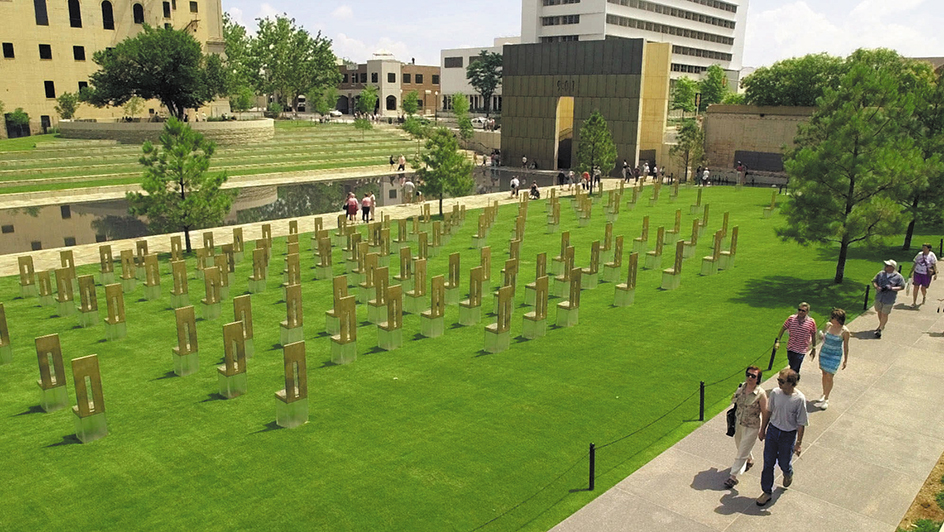Oklahoma City (pop. 681,054; met. area pop. 1,425,695) is the capital and largest city of Oklahoma. About a third of the state’s people live in the Oklahoma City metropolitan area. The city ranks as one of the chief centers of oil production in the United States. It is a commercial and manufacturing center of Oklahoma and a distribution point for a large farming area. 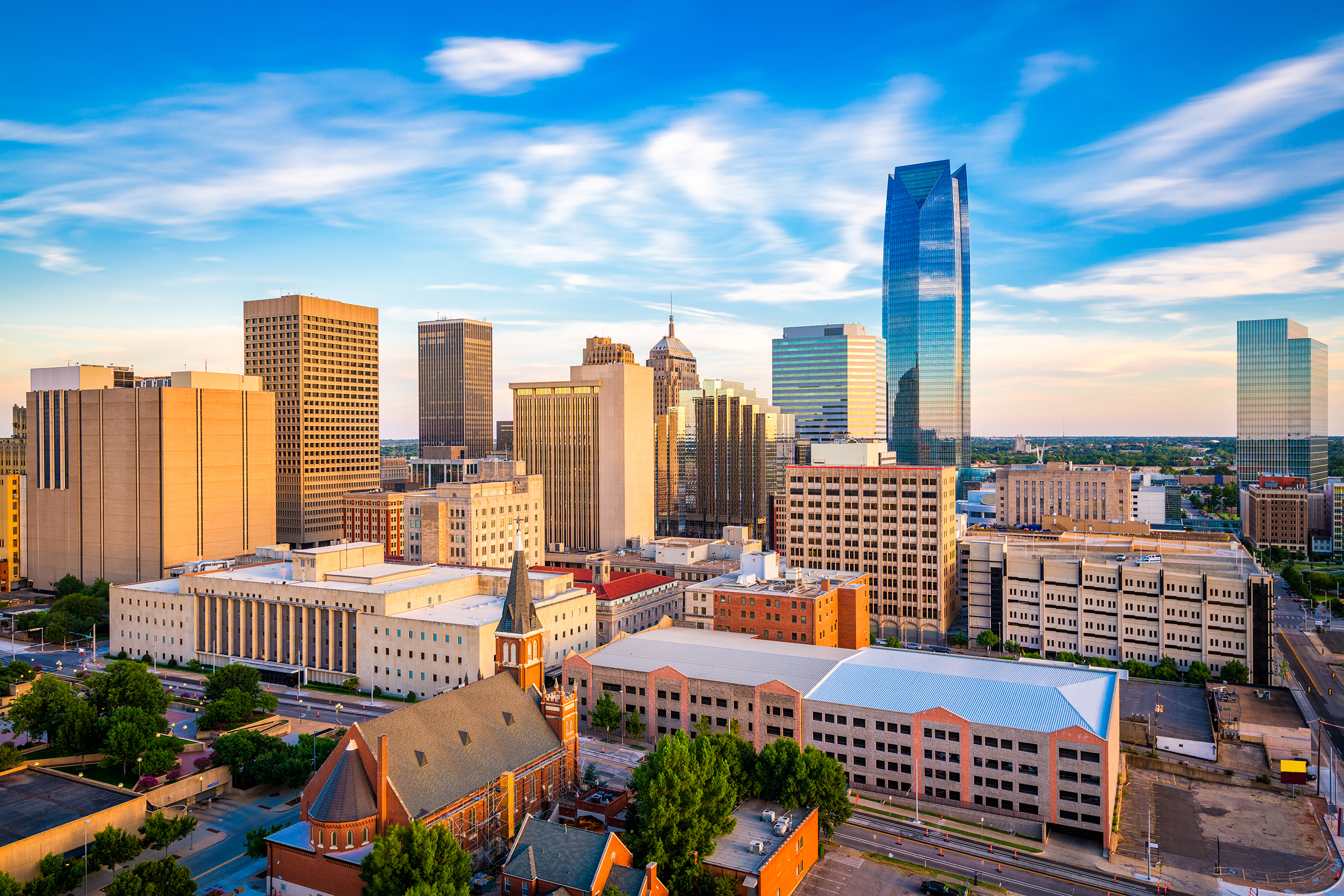
Oklahoma City lies on the North Canadian River, near the geographic center of the state. White settlers first came to what is now the Oklahoma City area in 1889. The United States government had originally set this land aside for Indigenous (native) people. But the government later opened central Oklahoma for white settlement. On the first day, about 10,000 settlers flocked to a site near the Atchison, Topeka and Santa Fe Railway (now part of the Burlington Northern Santa Fe Corporation) tracks and pitched their tents. This settlement became Oklahoma City. The city’s name came from two Choctaw words—okla, meaning people, and homma, meaning red.
The city
covers 621 square miles (1,608 square kilometers), including 14 square miles (36 square kilometers) of inland water. The Oklahoma City metropolitan area consists of seven counties—Canadian, Cleveland, Grady, Lincoln, Logan, McClain, and Oklahoma—and covers a land area of about 5,512 square miles (14,276 square kilometers). 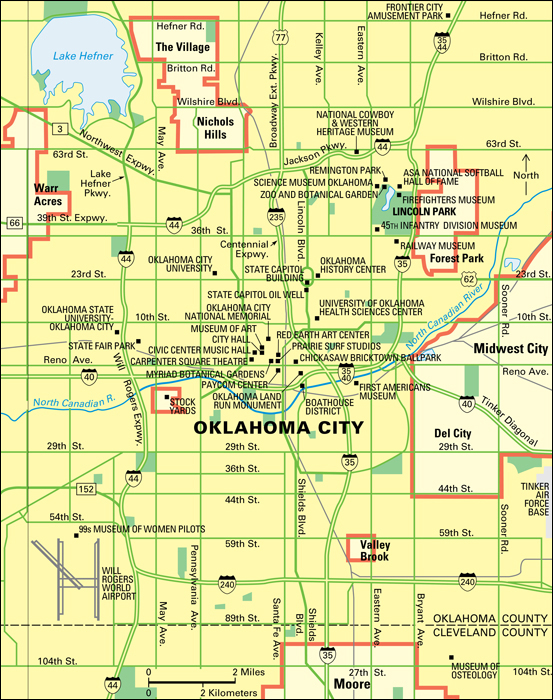
The State Capitol stands in a major oil field near the heart of the city. A statue called Tribute to Range Riders (1930), nicknamed “The Cowboy,” by the American sculptor Constance Whitney Warren stands in front of the Capitol. A well on the Capitol grounds that was slanted to draw oil from beneath the Capitol was long a tourist attraction. It ended production in 1986. Other producing wells are scattered throughout the city.
The 50-story Devon Energy Center is the tallest building in Oklahoma. Completed in 2012, the tower is 844 feet (257 meters) tall.
Almost all of the city’s people were born in the United States. African Americans make up about 15 percent of the city’s population. About 20 percent of the people are Hispanic Americans. Asian Americans make up about 5 percent of the population and Native Americans about 3 percent.
Economy.
The leading industries of Oklahoma City produce construction equipment, electronic equipment, food products, and petroleum products. Other Oklahoma City products include building materials, cottonseed oil, iron and steel products, paper products, telephone equipment, and transportation equipment. The city has hundreds of manufacturing plants. 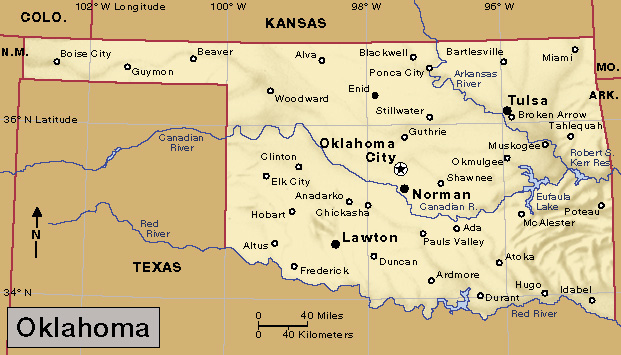
The federal and state governments provide jobs for many of Oklahoma City’s workers. Tinker Air Force Base is the largest single employer. This important repair and supply station for the U.S. Air Force employs several thousand civilians. The Federal Aviation Administration has a regional office in the city.
Much of Oklahoma City’s industrial importance results from its location in an area rich in natural resources for both oil production and farming. The area in Oklahoma County has hundreds of oil and natural gas wells. The city processes and distributes such farm products as feed, flour, and meat. It is the nation’s leading cattle market.
Will Rogers World Airport lies in the southwestern part of the city. Buses, trucks, and freight and passenger trains also serve the city. Oklahoma City has one daily newspaper, The Oklahoman.
Education and cultural life.
An eight-member elected Board of Education supervises Oklahoma City’s public school system. The city also has church-supported and private schools. Colleges and universities in Oklahoma City include Mid-America Christian University, Oklahoma Christian University, Oklahoma City University, and the University of Oklahoma Health Sciences Center. The University of Oklahoma is in nearby Norman. Southern Nazarene University is in nearby Bethany. The University of Central Oklahoma is just north of Oklahoma City, in Edmond. The Metropolitan Library System has a number of full-service public libraries and small extension libraries that serve Oklahoma County.
Oklahoma City has several community theaters. The Oklahoma City Philharmonic performs at the Civic Center Music Hall. The National Cowboy & Western Heritage Museum displays paintings and sculptures of the American West. The Oklahoma City Museum of Art features European and American paintings and sculptures, as well as drawings, prints, photography, and glass artworks.
The Oklahoma History Center has a collection of exhibits tracing the history of Oklahoma. Science Museum Oklahoma includes aviation and space exhibits, hands-on science exhibits, cultural galleries, gardens, a planetarium, and a theater. The Red Earth Art Center showcases traditional and contemporary Native American art and culture.
Oklahoma City has dozens of parks. Lincoln Park, the largest park, includes the Oklahoma City Zoo and Botanical Garden. The Oklahoma City Thunder plays in the National Basketball Association.
Government.
Oklahoma City has a council-manager form of government. The voters elect a mayor and eight council members to four-year terms. The council appoints a city manager.
In 1971, the voters elected Patience S. Latting mayor. She became the first woman mayor of a United States city of more than 200,000 people. Sales taxes provide much of the city’s revenue.
History.
Muscogee (Creek) and Seminole peoples lived in what is now the Oklahoma City area before white settlers first arrived. In 1889, the U.S. government bought the land there from the two tribes. On April 22, 1889, the government opened the area for white settlement, and a great land rush began. By the evening of that day, about 10,000 settlers had arrived there. Oklahoma City was incorporated in 1890. By 1910, it was the state’s largest city. Its population rose from 10,037 in 1900 to 64,205 in 1910. During that period, four railroads began to serve the city, and two meat-packing plants opened. In 1910, Oklahoma City replaced Guthrie as the state capital. 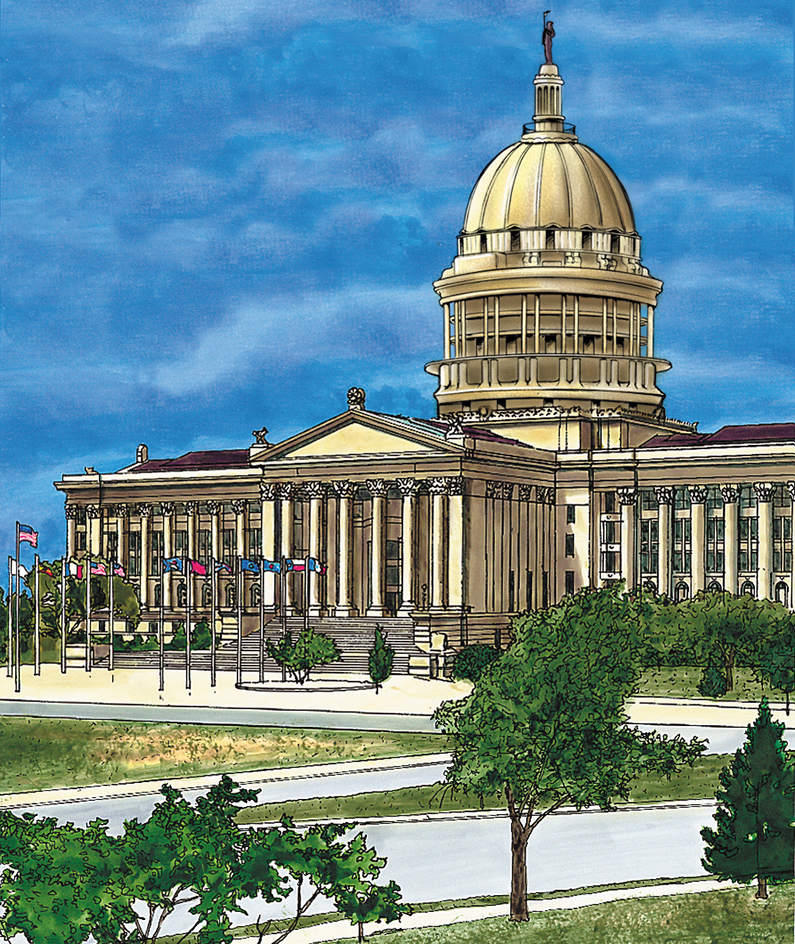
The city’s greatest problem during its early years was a lack of water sources. Shortly after 1900, Oklahoma City built its first municipal well. In 1919, it completed its first reservoir, Lake Overholser. Since then, the city has built several more reservoirs.
By 1920, Oklahoma City had 91,295 people. Oil was discovered in the city in 1928, and an oil boom began. Many oil companies built refineries, and the area became a center of the nation’s petroleum industry.
Tinker Air Force Base was built in Oklahoma City during World War II (1939-1945). By 1950, the population of the city had risen to 243,504.
Industrial expansion occurred during the 1950’s and 1960’s. Iron and steel plants were built, and the city also became a center of the electronics industry. Development took place in downtown Oklahoma City as well. During the 1960’s, the city annexed a large number of surrounding areas, and its area increased from about 310 square miles (803 square kilometers) in 1960 to about 635 square miles (1,645 square kilometers) in 1970. Oklahoma City’s population continued to grow. It reached 403,484 by 1980.
Since the late 1960’s, Oklahoma City has undertaken several urban renewal projects to replace old buildings and wipe out slums. One of the projects, called the Medical Center Project, was completed in 1978. It includes a dental college, a hospital, a nursing school, and headquarters for the State Health Department.
The Central Business District Project, which included the construction of several office buildings and a convention center, was completed in 1985. The John F. Kennedy Project involved renovating or replacing 1,260 acres (510 hectares) of slum housing. The project was completed in 1988. A race track opened in northeast Oklahoma City in 1988. In 1998, a 13,000-seat minor league baseball stadium was completed in Bricktown, a restored historic district near downtown.
In 1995, a terrorist bomb exploded in front of a U.S. government building in downtown Oklahoma City. The explosion killed 168 people. For more information on the attack, see Oklahoma City bombing.
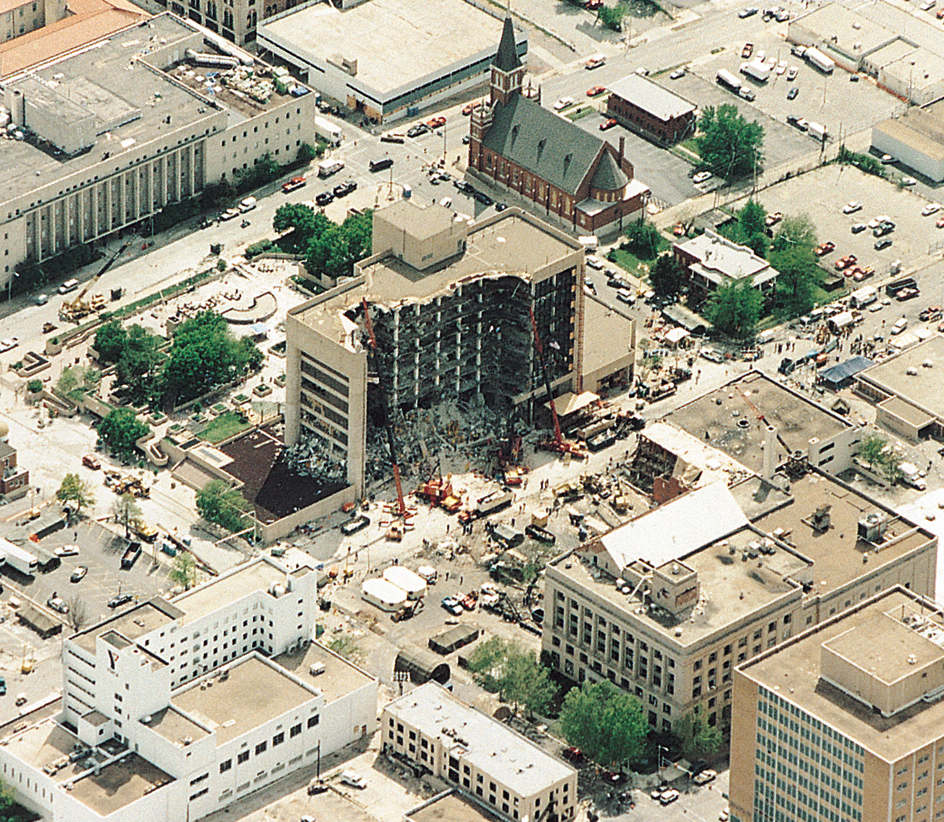
In the early 2000’s, the city completed further downtown redevelopment. Projects included the Civic Center Music Hall and a sports and entertainment arena, the Ford Center (now called Paycom Center). The Ronald J. Norick Downtown Library, named for a former mayor, opened in 2004.
Powerful tornadoes occur frequently in the Oklahoma City area. In May 2013, a tornado killed 24 people in Moore, just south of the city. A 1999 tornado strike in Moore killed 36.
